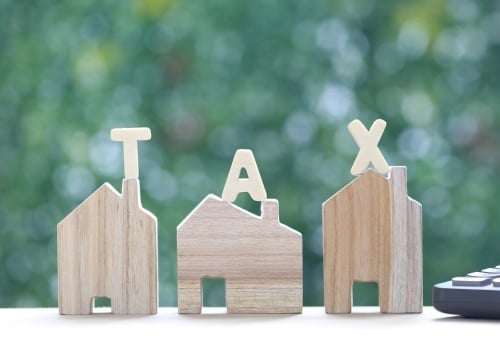9 min read
The End of the Low and Middle-Income Tax Offset (LMITO)
The Low and Middle-Income Tax Offset (LMITO) is ending, and this will have an impact on your tax return. If you're an Australian taxpayer, you need...

Tax breaks are always good news, but for house hunters they can have an added bonus. Not only do tax cuts mean potential buyers have more cash in their pocket at the end of the financial year, but they’re also looking at increased borrowing power.
A typical homebuyer’s borrowing capacity could rise by tens of thousands of dollars after July 1 as a result of this year’s Federal Budget.
To put it simply, with lower income taxes you may have more disposable income available to repay your loans. Every Australian taxpayer will get a tax cut from July 1, 2024 under the updated stage three tax cuts - regardless of their income - with the exact amount depending on how much you earn.
Let’s take a potential single homebuyer on a $100,000 income looking at a 30-year loan with a typical interest rate of 6.19 per cent and a loan-to-value ratio (LVR) of 80 per cent or less. Their borrowing capacity will increase by about $25,000 in the new financial year. A future purchaser earning $150,000 could look at borrowing approximately $37,000 more than in the 2022/2023 financial year. Couples will likely be in an even stronger position.
While a tax cut is a much needed helping hand in the midst of a cost-of-living crisis, these tax breaks alone will not significantly improve your borrowing power.
How to improve your borrowing power
Borrowing capacities have fallen by about 30 per cent since interest rates started rising in May 2022. With many top economists forecasting that a rate cut seems unlikely before the end of 2024, it pays for potential buyers to consider all the tools in your financial tool belt to improve your borrowing power and increase your chances of securing a larger loan.
Reduce your expenses
One of the most effective ways to improve your borrowing power is to reduce outgoings and unnecessary discretionary spending. Lenders take a close look at a borrower's living expenses when calculating borrowing power, so tightening the budget belt can free up more income for loan repayments. Create a realistic budget for your household, track spending with the help of an app or spreadsheet and identify areas where you can cut costs.
Increase your income
Of course, it’s not rocket science, but if you earn more you’ll be able to borrow more. There are the traditional ways of boosting your income such as asking for a raise or picking up a second job. Then there are alternative “side hustle” or “gig” options like taking on freelance work, renting out belongings such as power tools, your car or car space, and selling items online. A higher income can boost borrowing capacity and make it easier to meet lender requirements for loan approval however it’s important to understand any tax implications that come with the additional earnings.
Review and reduce your credit card limits
Even if you keep your lines of credit at $0, lenders consider your limits as money already spent - with interest. High credit card limits can indicate a higher future level of debt with additional payments to navigate alongside a home loan. Review your credit card limits, their interest levels and reduce them where possible.
Reducing your debts
A debt-free (or low debt) mortgage applicant looks great on paper, so think about paying off as many of your existing debts as possible. Focus on those with the highest interest and try to pay them off first. Alternatively, talk to your lender about consolidating debts which will enhance your borrowing power by decreasing the debt to income (DTI) ratio.
Saving a larger deposit
Finally, a larger deposit will always make the biggest impact on your borrowing power as it reduces the LVR and demonstrates financial stability to prospective lenders. If you’re able to save a deposit of 20 per cent or more, there can be other savings. You may be able to access more competitive home loan interest rates and lenders won’t charge lenders mortgage insurance.
To discover how the 2024 Federal Budget’s tax cuts could improve your borrowing power, talk to a trusted mortgage broker today.
Call us to today!

9 min read
The Low and Middle-Income Tax Offset (LMITO) is ending, and this will have an impact on your tax return. If you're an Australian taxpayer, you need...

5 min read